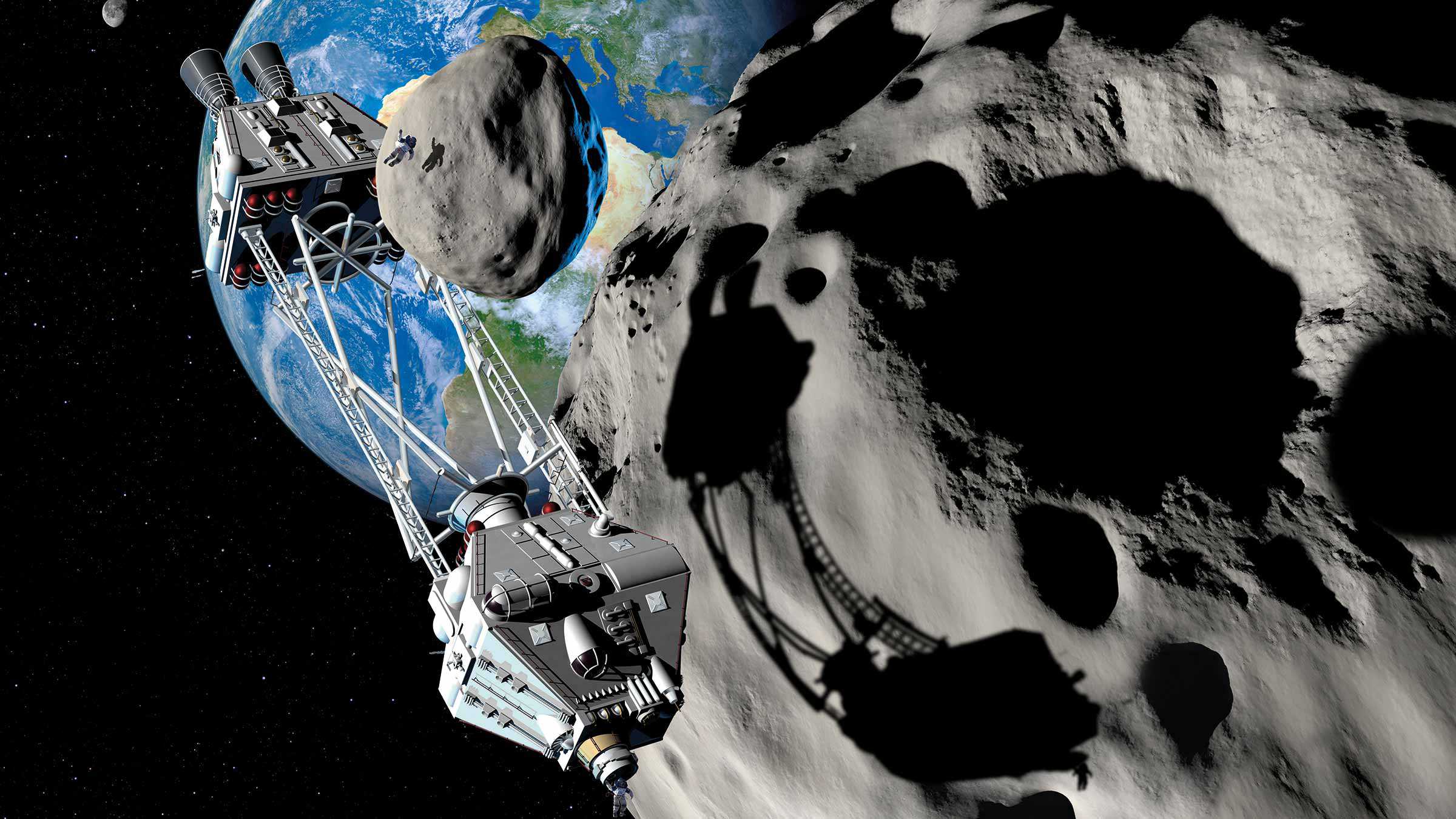NASA’s Lucy mission launches to Jupiter’s Trojan asteroids
18 Oct 2021 Michael Banks
NASA has launched a $1bn mission to study Jupiter’s Trojan asteroids — two large clusters of rocks that are believed to be remnants of primordial material that formed the solar system’s outer planets. The probe, dubbed Lucy, lifted off from Cape Canaveral Air Force Station in Florida at 5:34 a.m local time on Satuday aboard an Atlas V rocket.
The 12-year mission will consist of several close-up fly-bys of Trojan asteroids to yield clues about these so-called “fossils” of the solar system. Given this link, the mission is named after the 3.2-million-year-old “Lucy” hominid fossil that was discovered in 1974 in Ethiopia and which is thought to be one of our earliest known ancestors.
The Trojans orbit the Sun “in front of” and “behind” Jupiter’s orbit. Both groups are located roughly at the same distance from Jupiter as the distance from Jupiter to the Sun. While Jupiter is large enough that it would scatter away nearby asteroids, due to the combined gravitational influences of the Sun and Jupiter, the Trojan asteroids have been trapped on stable orbits for billions of years.READ MORE

The 14 m craft, contains four payloads that include a suite of cameras, imagers and spectrometers. Lucy’s first target in 2025 en-route to the Trojans will be a small body in the main asteroid belt. Lucy’s first Trojan asteroid encounter will happen two years later in the Trojan swarm that is in front of Jupiter. Lucy will then carry out remote sensing on four bodies – ranging from 20 to 60 km in diameter — that will include mapping their surface geology such as shape and crustal features as well as investigating their composition and searching for rings or satellites accompanying the bodies.
After four fly-bys in the front swarm, Lucy will then travel back to Earth to undergo further gravitational manoeuvres to travel to the Trojan swarm behind Jupiter, arriving in 2033. It will then carry out a fly-by of a Trojan binary asteroid pair that are both around 100 km in diameter.
Time capsule
Lucy was chosen as a NASA Discovery mission for launch in 2017. As well as the main payloads, Lucy also carries a plaque as a time capsule, which includes quotes from Albert Einstein and Carl Sagan as well as a diagram showing the positions of the planets and the date of Lucy’s launch. Indeed, it is expected that once the mission is complete, the craft will remain in a stable orbit for hundreds of thousands of years.
“Lucy embodies NASA’s enduring quest to push out into the cosmos for the sake of exploration and science, to better understand the universe and our place within it,” says NASA Administrator Bill Nelson. “I can’t wait to see what mysteries the mission uncovers.”
from physicsworld.com 18/10/2021

Δεν υπάρχουν σχόλια:
Δημοσίευση σχολίου